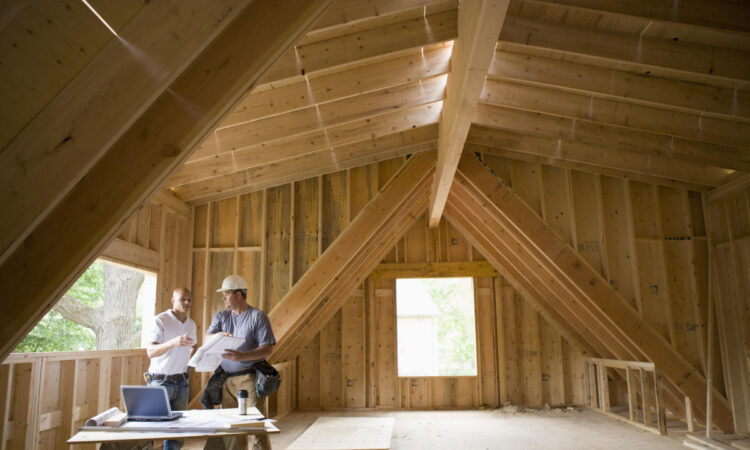
Doing up a property is expensive and any savings you make along the way can be invaluable when it comes to building up your renovation budget.
Whether you’re building, buying or renovating a house, there are several lesser-known ways to save when it comes to VAT and stamp duty.
Here’s how you can cut back your VAT and stamp duty bill when it comes to property.
Save VAT by building a house
If you’re building a house from scratch, you won’t pay VAT on the labour or the materials. The standard rate of VAT is 20% so if your building projects is costing £1,000,000, that’s a saving of £200,000.
With such savings available, if you’re buying an unmodernised home, it might work out more cost-effective to knock it down and build it from scratch, rather than renovating. “An additional advantage is that new builds most often come with a 10-year NHBC [National House Building Council] guarantee,” says Marc Schneiderman of Arlington Residential.
Read more: The pros and cons of a 99% mortgage
That said, for it to be VAT-exempt, the property genuinely needs to new. “To qualify it has to be used independently of any other property, and any existing buildings on the site have to be demolished completely to ground level, unless you’re extending an existing building to create a new house or flat,” says Schneiderman.
Save VAT by buying an empty house
If you buy a house that’s been empty for two years or longer before you start renovations, any work that you do will be charged at a 5% rate of VAT. “That is a huge 75% saving on your VAT charges,” says Schneiderman.
“It is not that unusual for a property to be empty for two years before work starts. If you are buying a property from the estate of someone who has died, it can take many, many months before probate is granted and then it could take six months to sell. By the time you might applied for permission and planning consent to make changes, it could be two years.”
Don’t assume that you will always get this VAT reduction, however. It’s likely that you will need to provide evidence for the property being empty. “You may be asked to prove this by providing electoral roll or council tax records,” says Ashley Wilsdon at Middleton Advisors. “VAT is a fairly complex subject matter, and we would usually ask a specialist to advise our clients on any properties that may qualify given the intricacies that the HMRC operate around this.”
David Hannah, of Cornerstone Tax, adds: “You may be able to get a reduced rate of 5% on a ‘qualifying renovation’ instead of incurring 20%. The rules here are quite complex and they have to be agreed between you and the supplier in advance and cannot be the subject of a refund claim.”
Save VAT on mobility aids and energy saving
When certain mobility aids, such as grab rails and ramps, are installed in a home for someone over the aid of 60, they are charged at a VAT rate of 5%.
Read more: The on-trend features luxury property buyers are looking for this year
“If one is installing mobility aids for the elderly for use in domestic accommodation the reduced rate of 5% applies,” says Ed Sainter at Middleton Advisors. “This rate also applies if energy saving materials are being installed and grant-funded heating system measure too.”
Save stamp duty on chattels
While you pay stamp duty on any home over £250,000 in the UK, chattels are exempt from any sale. “Where a purchaser agrees to buy a property for a price that includes an amount properly attributed to chattels and the purchaser can show this is a genuine attribution, that amount will not be charged to SDLT [stamp duty land tax],” says Schneiderman. “The sale contract should make it clear whether contents were included in the sale or not.”
HMRC doesn’t provide a list of exempt chattels, but they include carpets, curtains, free-standing furniture, kitchen white goods (unless integrated), electric and gas fires and light shades. “With SDLT rates being as high as 15% in some cases, it is worth ensuring that you are not paying tax on amounts attributed to chattels,” adds Schneiderman.
Read more: Is there an ethical way to invest in property?
While there is no need to necessarily get a professional involved in claiming back stamp duty attributed to chattels, it can help, especially if the values are large.
“Chattels valuation should be done by a professional, either a surveyor or auctioneer, depending on the nature of the chattel. This should help minimise any problems if HMRC decide to dispute the value of the chattels,” says Hannah. “I would counsel that if you believed you have significant chattels in the property, you can actually do this prior to the purchase and not afterwards.”
Save stamp duty and VAT by buying a plot
There is a way that you can reduce your stamp duty and VAT bill at the same time.
“Since the supply of residential land is separated and the supply of construction services for a new build home is also zero rated, then one of the best ways to save VAT and stamp duty is to buy a plot and then generate a contract with the builder,” says Hannah. “This is to build the building because the building works don’t attract stamp duty.”
Watch: The government is at war with itself over house building
Download the Yahoo Finance app, available for Apple and Android.
